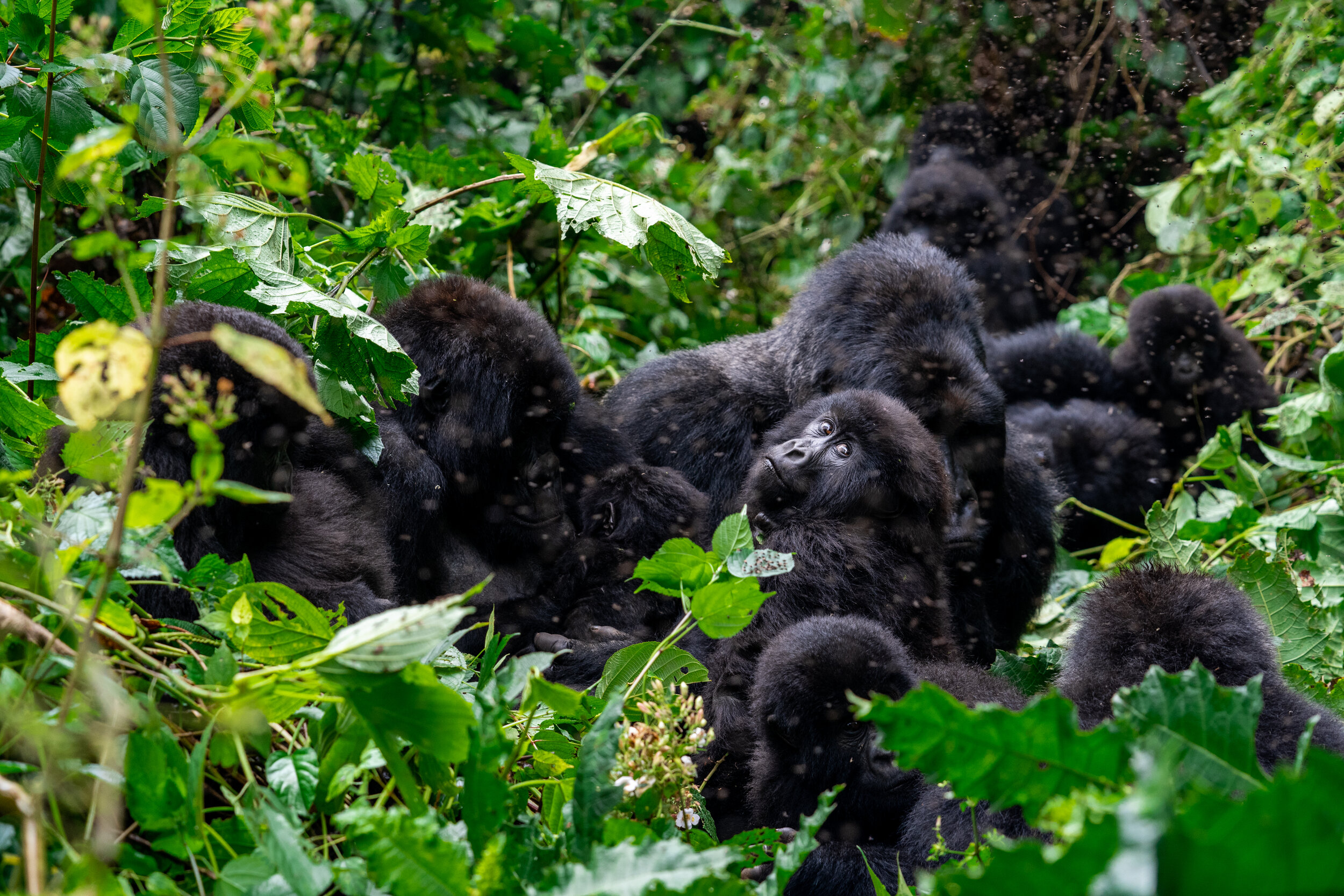
LOWLAND AND MOUNTAIN GORILLAS OF EASTERN CONGO
Exploring the World of the Gorillas the Virunga Mountains
DEMOCRATIC REPUBLIC OF THE CONGO
The misty Virunga mountains of eastern Congo, Uganda and Rwanda are home to the world's last mountain and eastern lowland gorillas. While their numbers have recovered over recent years, these animals are still under constant threat from poachers, mining companies, and armed rebel groups still operating within their territory.

Baby on the Branch
Virunga, DRC. June 2021.
A young gorilla swings on a branch during playtime on the first floor. Between bites of leaves and stalks, the gorilla plays on branches and mimics key social and survival skills from its family members.
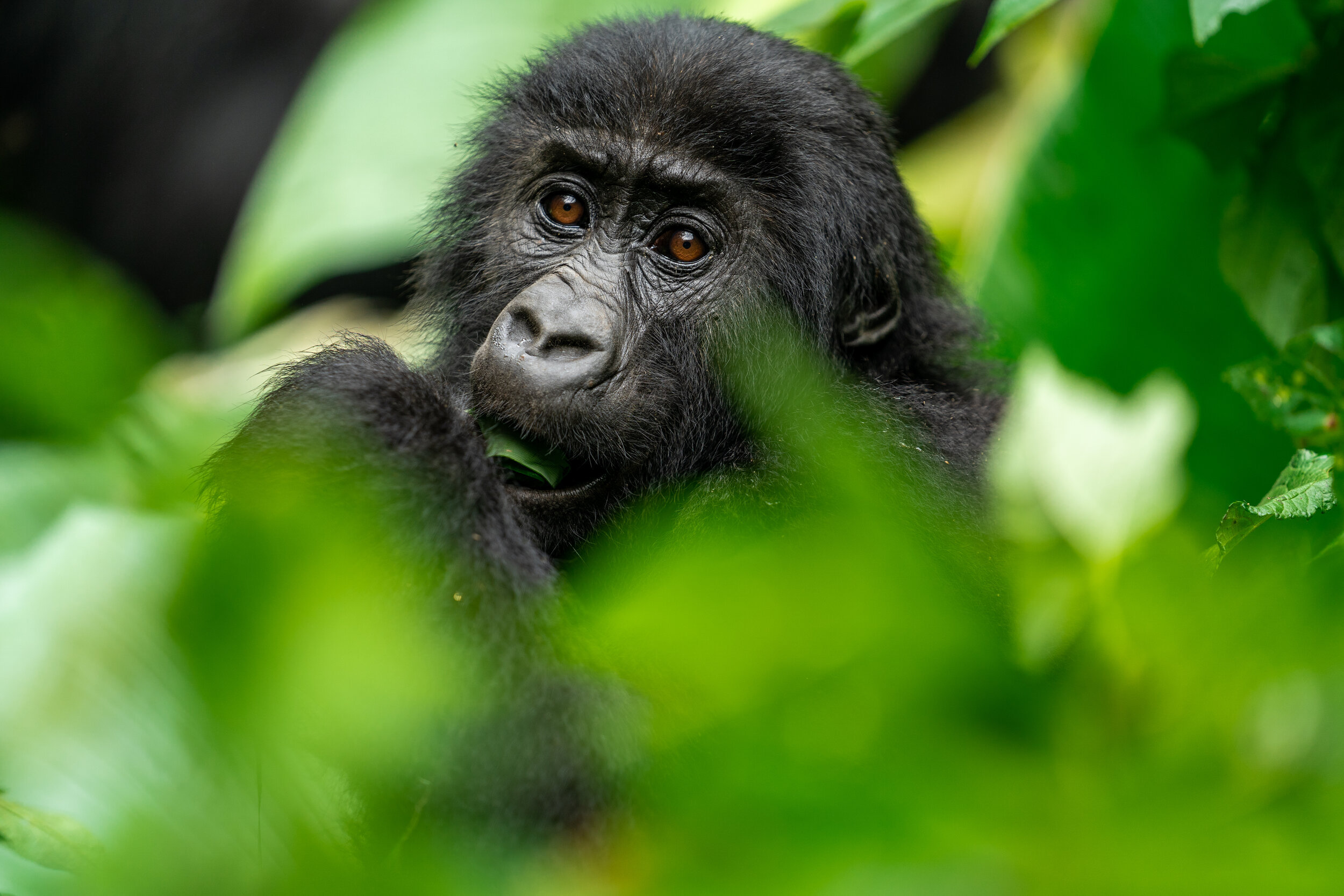
Young Leaves
Kahuzi Biega, DRC. June 2021.
Gorillas spend the vast majority of their time eating and sleeping. They are largely vegetarians, eating young leaves, tree stalks, fruit, and bark, as well as the occasional safari ant and snail. Because their diet is lacking significant protein, they have to eat a lot in a single day— up to 18 kilograms.
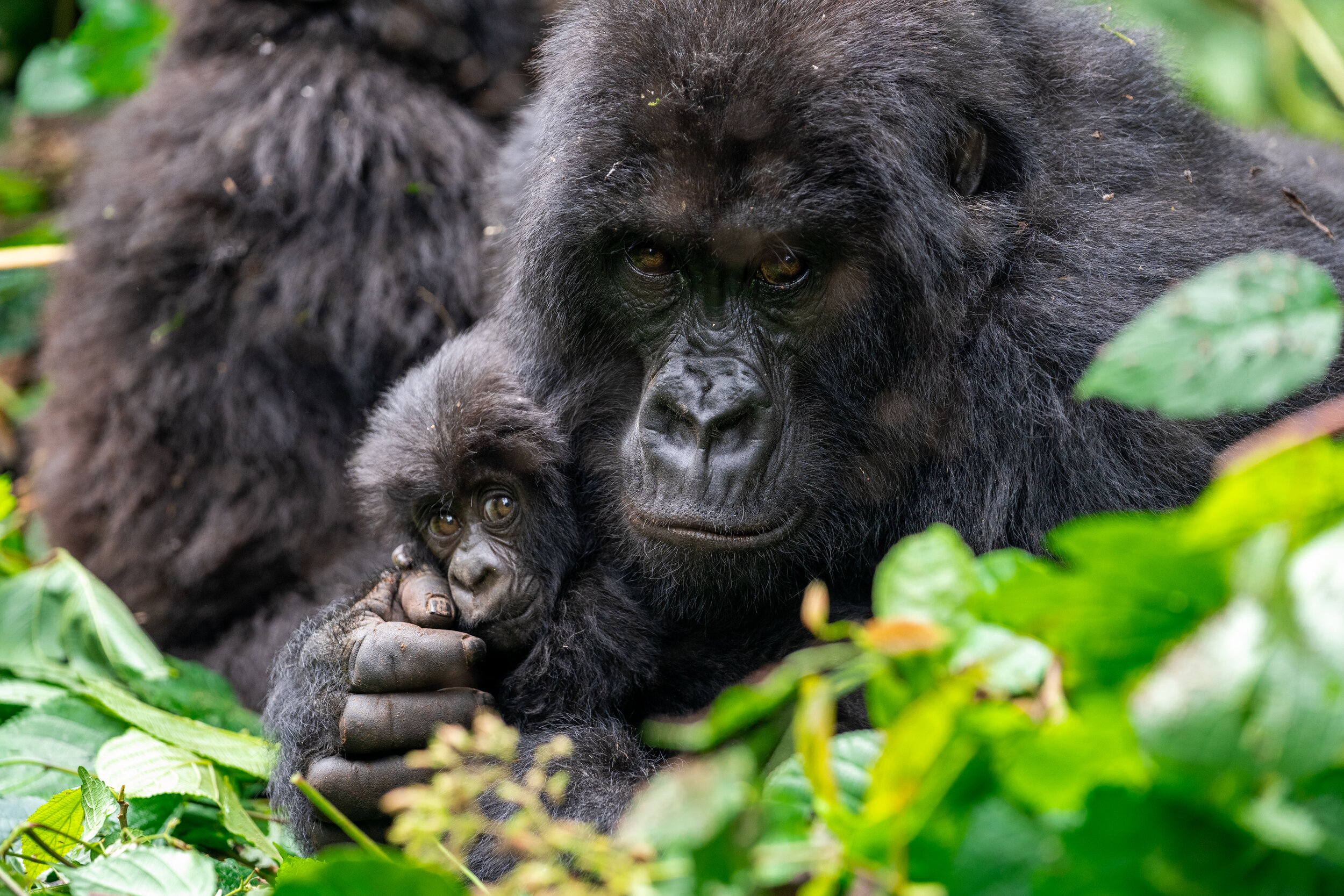
Mother and Young Baby
Virunga, DRC. June 2021.
The bond between parent and child is strong amongst mountain gorillas. This mountain gorilla mother will raise her baby until around the age of four when she will then become pregnant again to raise another child. Female gorillas are able to produce offspring from the age of 10 until the age of around 30.

Mountain Gorilla Family Cuddle
Virunga, DRC. June 2021.
After spending the morning foraging for leaves and berries, this gorilla family gathers around the alpha male to rest together.

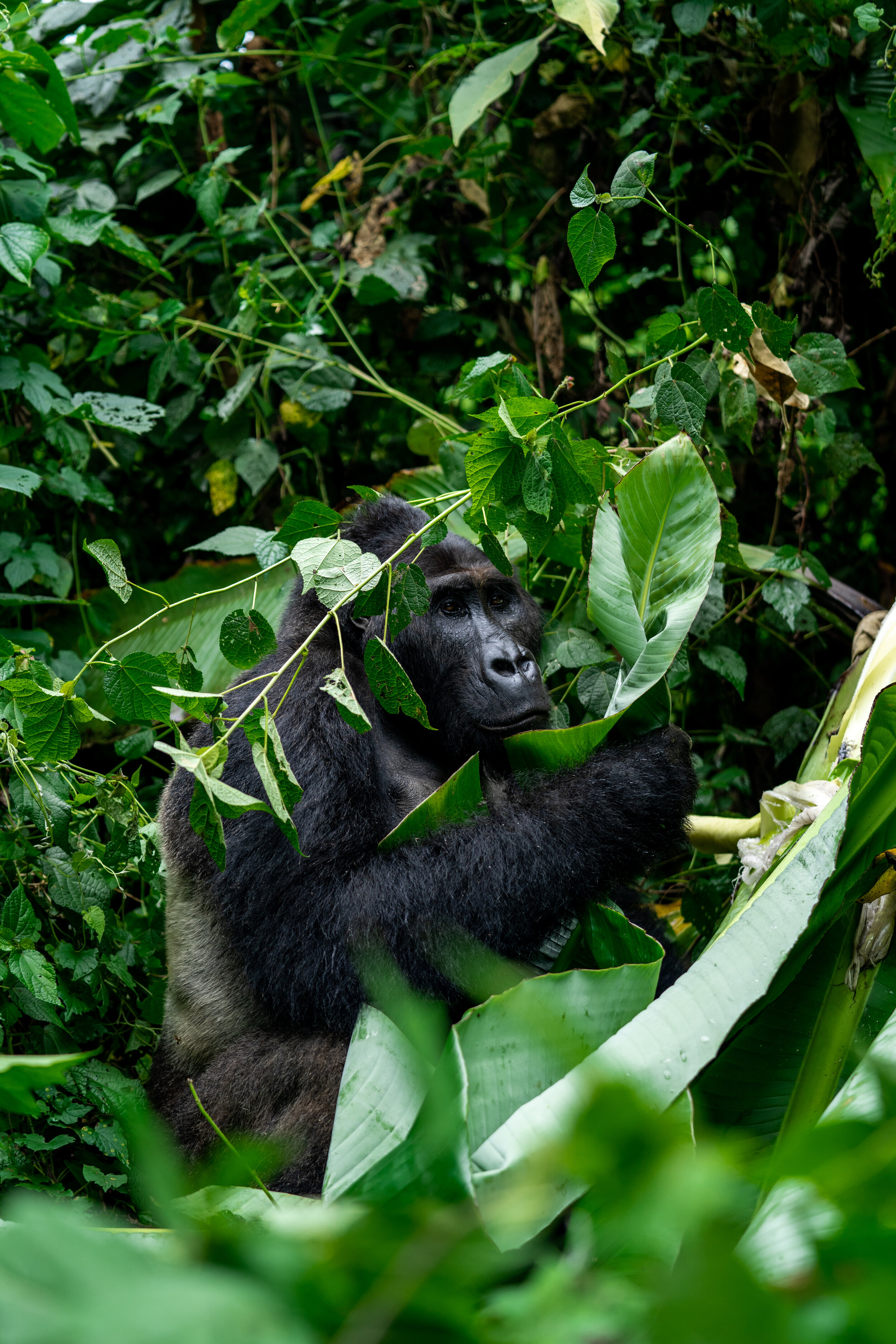
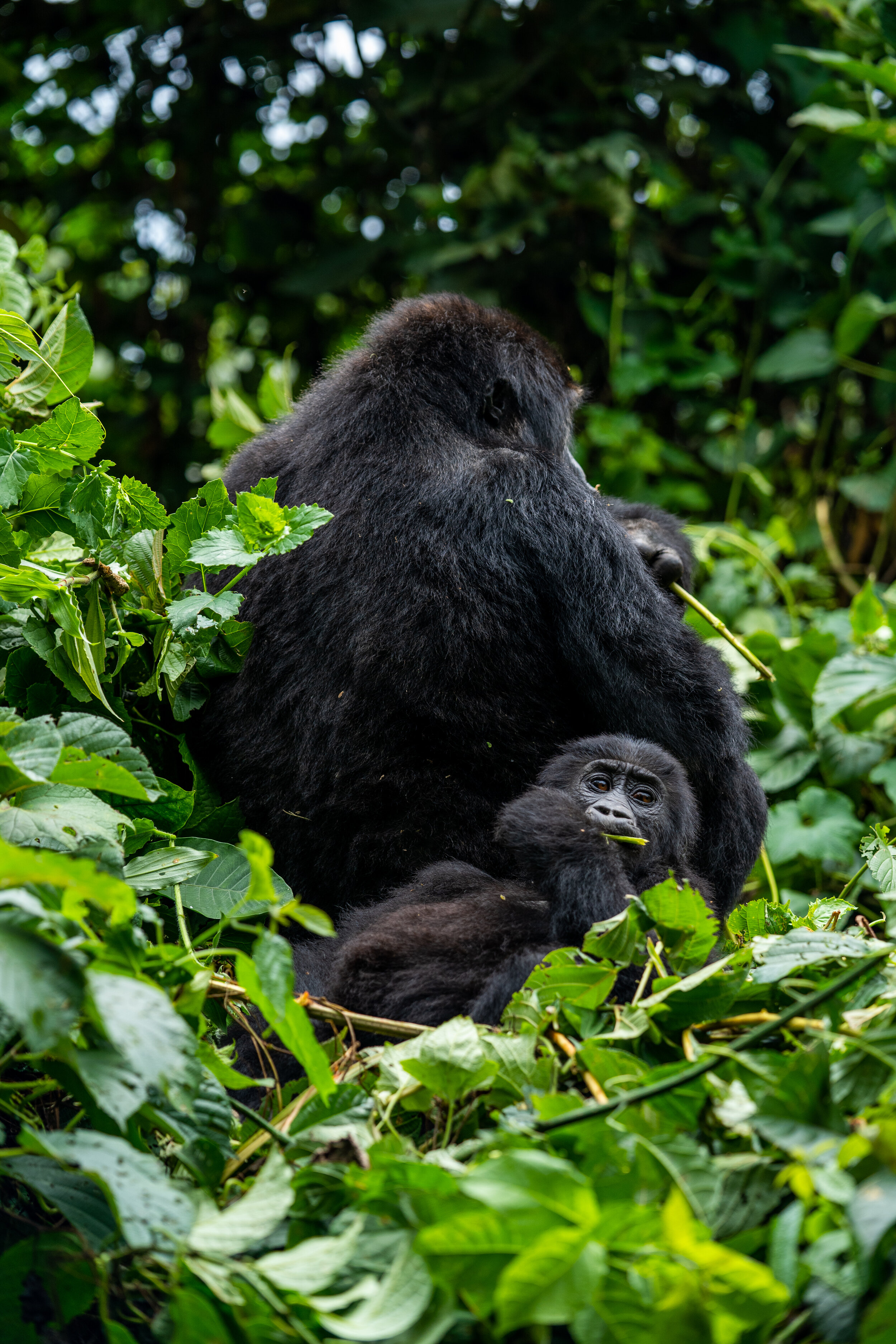
Eating ad Dental Care
Kahuzi Biega, DRC. June 2021.
Eastern lowland gorillas munch leaves in the morning while taking breaks to chew sticks.

An Eastern Lowland Alpha Male
Kahuzi Biega, DRC. June 2021.
Unlike their mountain cousins, eastern lowland gorilla families are more patriarchal, with only one dominant alpha male allowed to mate with his harem. Younger males are eventually kicked out of the family when they reach maturity to live alone in the forest. Eventually, they are forced to battle with other families for females in order to start their own families.
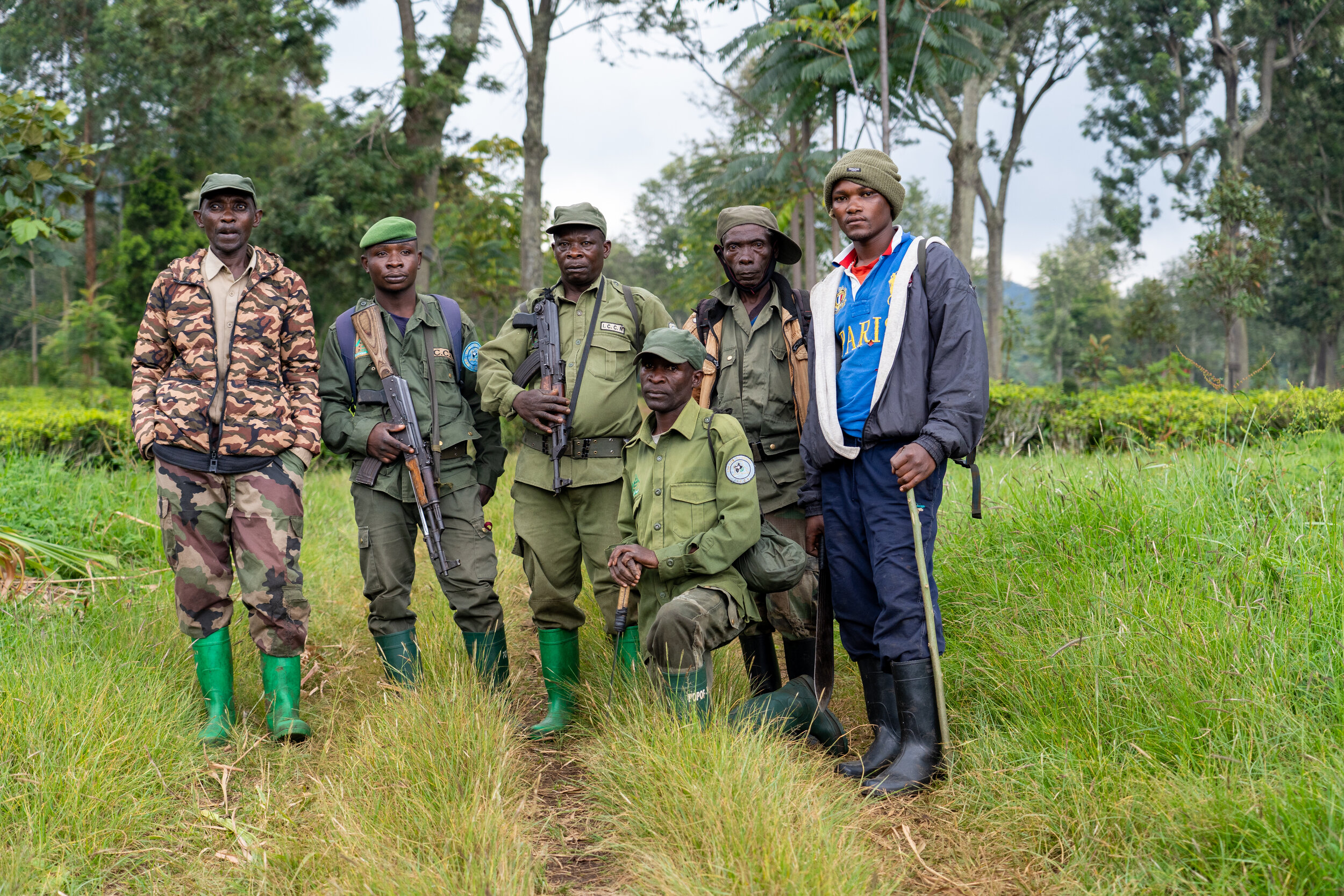
The Rangers of Kahuzi Biega National Park
Kahuzi Biega, DRC. June 2021.
The Institut Congolais pour la Conservation de la Nature was founded under the Belgian authorities in 1925. Today, the organization is responsible for managing and protecting Congo’s largest and most threatened national parks. Park Rangers are the heroes of the jungles. Every year ICCN rangers lose their lives fighting to protect these parks and the wildlife that lives in them.

Playing amongst the Leaves
Virunga, Uganda. June 2021.
A mountain gorilla baby plays with his feet while tumbling amongst the leaves in the dense Virunga rainforest.

Curious Mountain Gorilla Baby
Virunga, DRC. June 2021.
A mountain gorilla baby, noticeably more fluffy than their lowland cousins, plays in the bush.
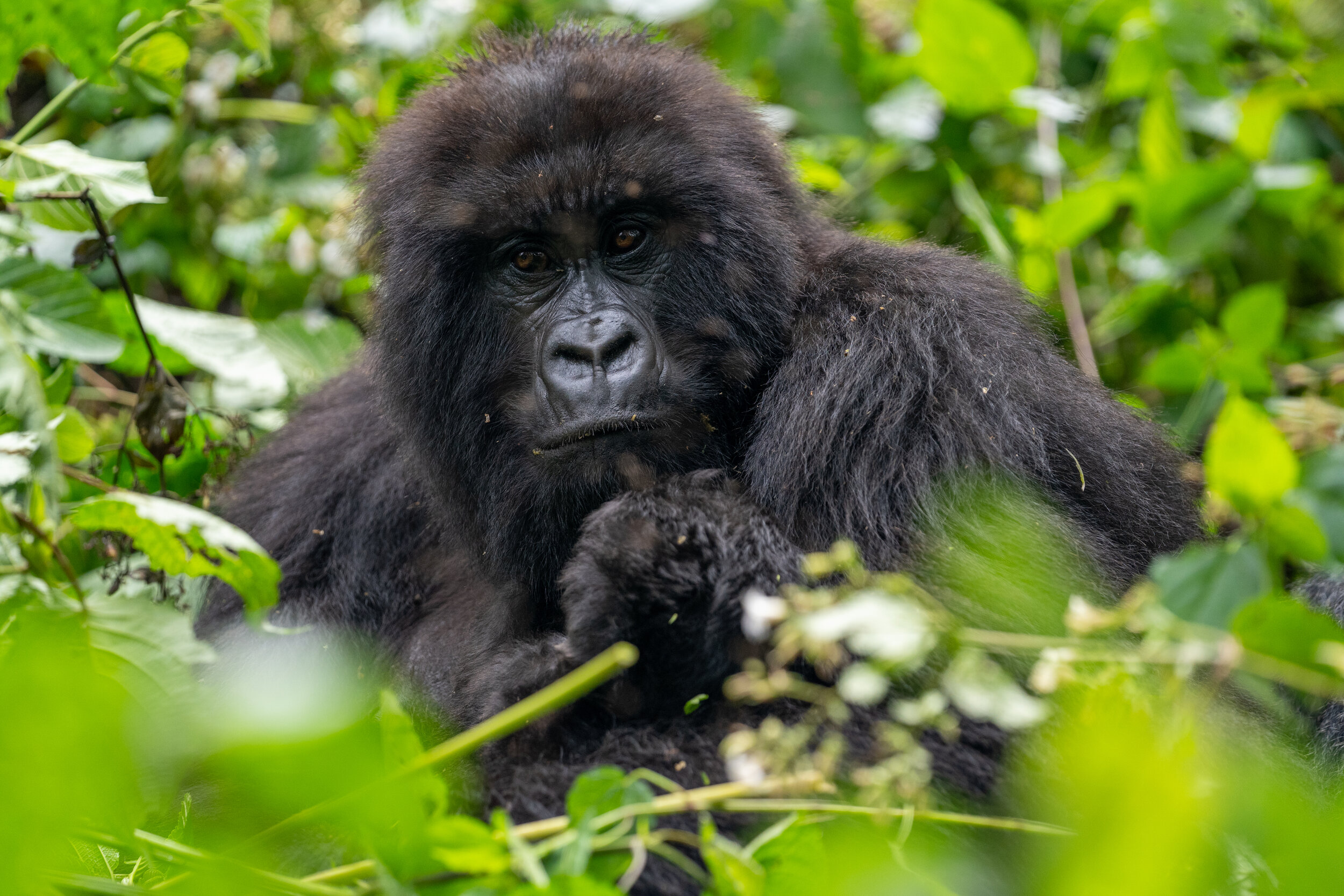
Adolescence
Virunga, DRC. June 2021.
An adolescent mountain gorilla looks at the camera during its morning foraging time in the Virunga mountains.
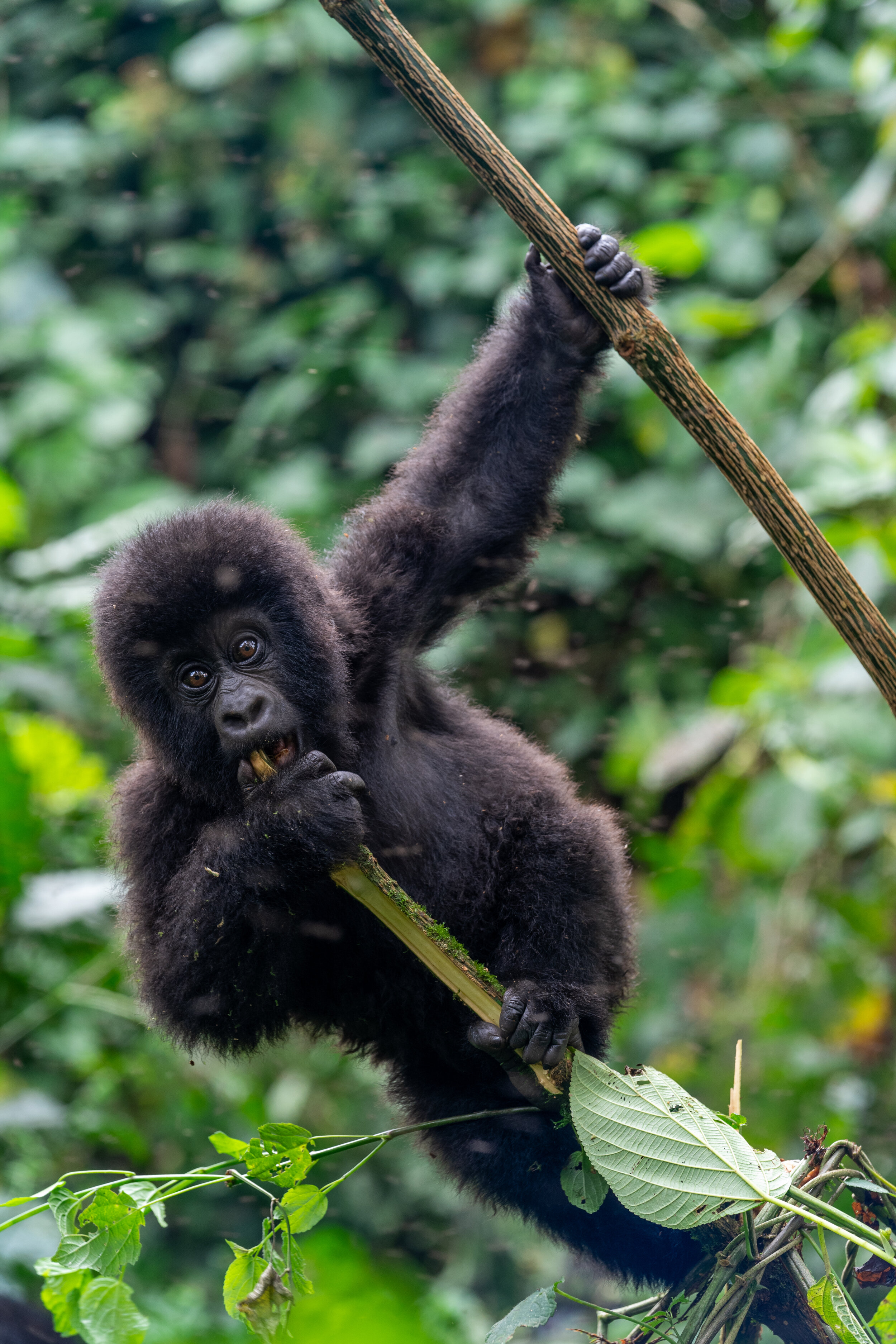
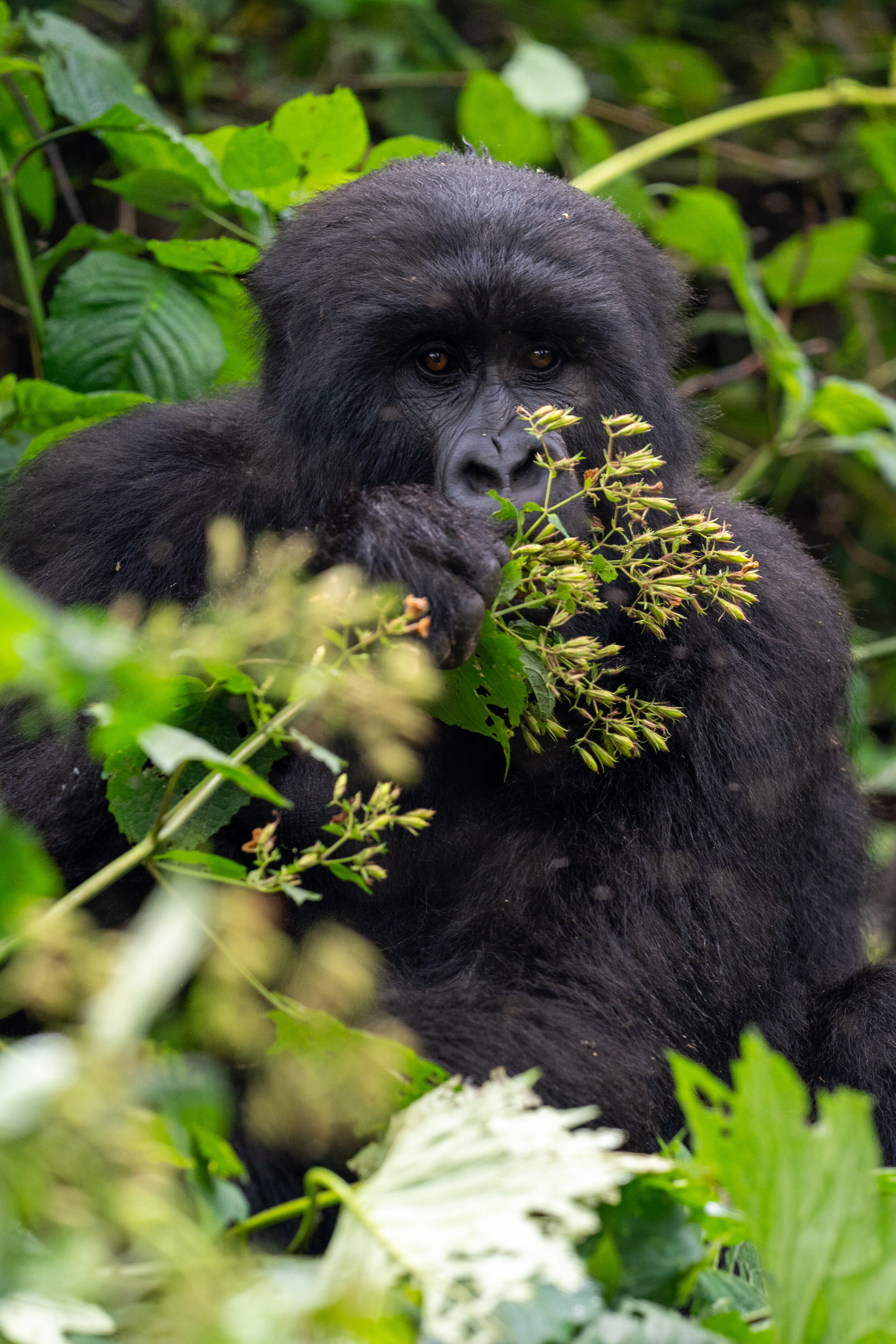

Mountain Gorilla Stares
Virunga, DRC. June 2021.
Mountain gorillas in Virunga National Park go about their daily activities without paying much attention to humans. These families are tracked and monitored daily by park rangers to protect them from poachers and guerrilla fighters who still live around the park.

Descending from the Canopy
Kahuzi Biega, DRC. June 2021.
After spending some time at the tree canopy eating fruit and looking out for rivals, this alpha male decided to descend from the canopy to collect leaves to eat while watching over his females.
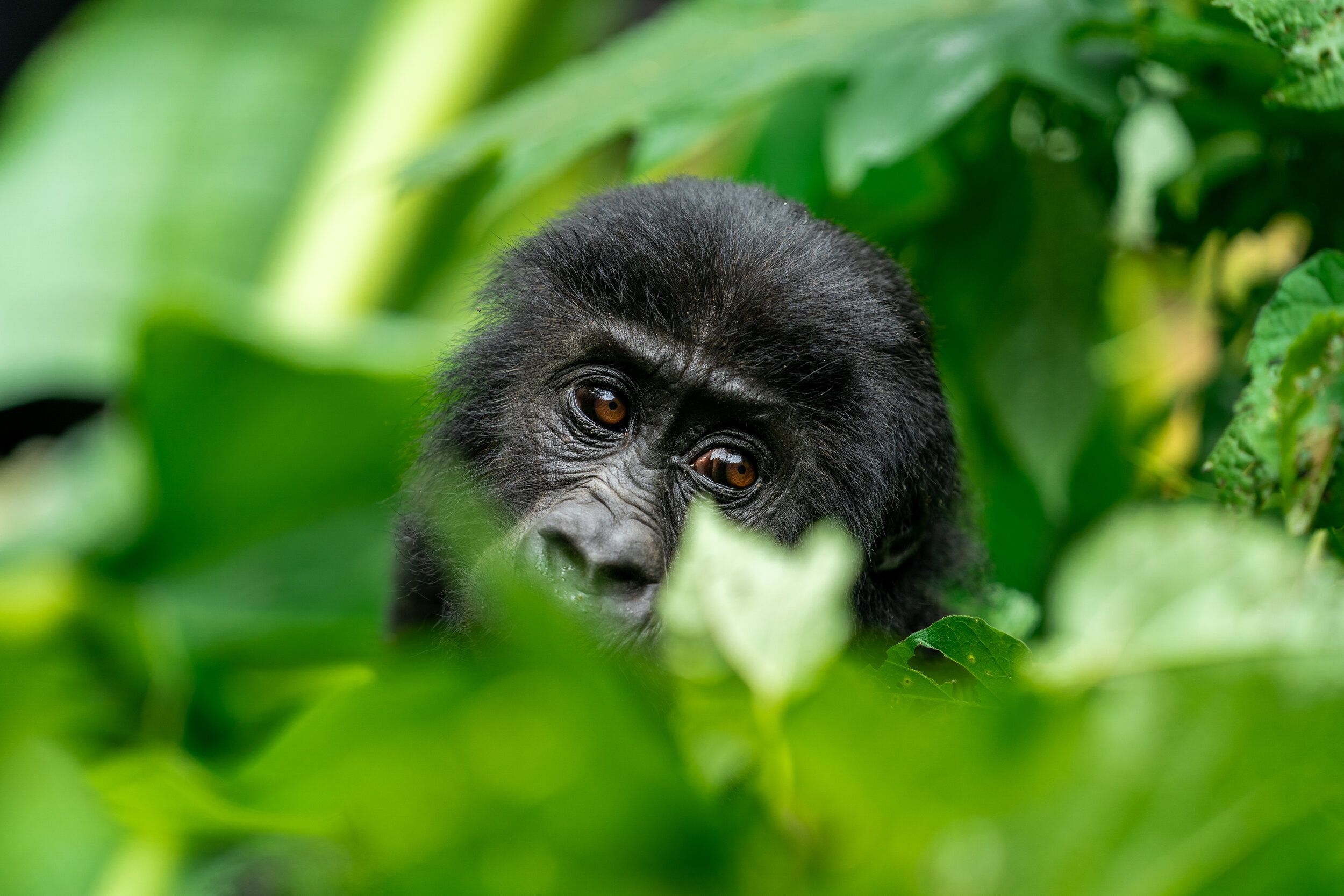
A Gorilla amongst the Folliage
Kahuzi Biega, DRC. June 2021.
An eastern lowland gorilla baby hides amongst the foliage but pokes his head out to inspect his surroundings every once in a while before going back to munching on young leaves.
